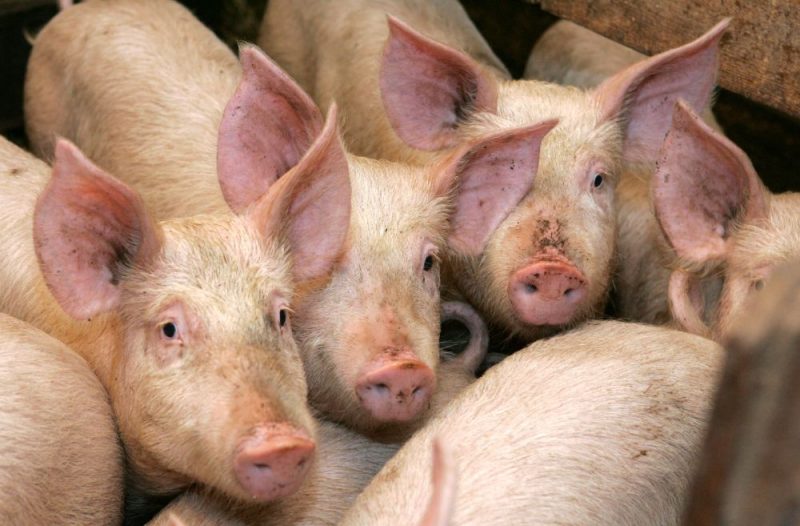Today is the first time Indonesia has a CubeSat that will reach into space
Jakarta (ANTARA) – The Nano Satellite developed by young Indonesian scientists and fully supported by PT Pacific Satelit Nusantara (PSN) will be launched towards the International Space Station (ISS) using a SpaceX Falcon 9 rocket on Wednesday (11/23) at 03:30 WIB.
The launch of the satellite, called Surya Satellite-1 (SS-1), is historic for the national space industry because it is the first satellite independently developed by young Indonesians.
“We are very proud because the four young people involved in the development of this nano-satellite are engineers from PSN who represent our vision in driving innovation in Indonesia,” Pacific Satelit Nusantara CEO Adi Rahman Adiwoso said in a statement. official, Tuesday .
Read also: The SATRIA-1 project is entering the 68.3% construction phase.
“The SS-1 satellite is also part of PSN’s strategic vision and ambition to contribute to Indonesia, in accordance with the company’s commitment to become an Indonesian company on a global scale. PSN will continue to innovate to accelerate the digital connectivity in Indonesia,” Goodbye said.
The SS-1 satellite was launched on the CRS-26 mission aboard SpaceX’s Falcon 9 rocket from NASA’s Kennedy Space Center in Florida. SS-1 will be launched using the SpaceX Dragon payload to the ISS and undergo an orbital process raising for about 11 days to get to the ISS.
The next stage that will be overcome is the process distribution which is no less important than the launch process. PSN has provided full support to the development of nano satellites, initiated by a group of students from Surya University since 2016.
The idea and project for the development of this nano-satellite was initiated by Surya University, which is supported by a multi-stakeholder collaboration between a team of young engineers and PT Pacific Satelit Nusantara, the Indonesian Radio Amateur Organization (TIME ), PT Pudak Scientist, as well as support from the Ministry of Communications and Information Technology, the Center for Satellite Technology, National Aviation and Space (Pusteksat LAPAN) and the National Research and Innovation Agency (BRIN ).
Read also: Satria is part of the “blank spot” solution in the 3T region of Papua
“The launch of the SS-1 which was developed by Indonesia’s younger generation with everyone’s support interested is one of the new milestones in Indonesia’s satellite development and provides an injection of motivation for the importance of mastering satellite technology for Indonesia,” said the head of the Satellite Technology Research Center, National Agency for Research and Innovation (BRIN), Dr. Ing Wahyudi Hasbi.
“The Research Center for Satellite Technology-BRIN will always support the development of satellites developed by universities and to boot Indonesian with competence already possessed, in the research support program, as well as in the satellite integration and test facilities set up by BRIN,” he said.
Meanwhile, the head of the engineering physics curriculum at Surya University, who is also the principal investigator of SS-1, prof. Sunartoto Gunadi believes that the future of Indonesia’s satellite industry will be even brighter. Full support from PSN and interested during the development process it is also proof that the support of industry players can produce young scientists who can contribute to Indonesia.
“I am thankful for the success of my great sons namely Zulfa Dhiyaulhaq, Setra Yoman Prahyang, Hery Steven, Suhandinata, Afiq Herdika Sulistya and Roberto Gunawan who were able to complete the SS-1 nano satellite project,” he has declared.
“I hope what my children are doing will further encourage and enliven the efforts of the millennial generation, to contribute as children of the nation to advance and educate the life of the nation,” said Prof. Sunartoto Gunadi.
After going through the design process and a series of tests consisting of payload test, vacuum test, thermal test, vibration test, control test, functional test And devolve to JAXA for inspection and integration with the launch system, SS-1 is now entering the launch phase from SpaceX to the ISS.
Previously, in February 2018, the Surya Satellite-1 Team took part in the KiboCUBE program competition initiated by the United Nations Office for Space Affairs (UNOOSA) and the Japan Aerospace Exploration Agency (JAXA).
Read also: Welcoming the digital age with satellite
In August 2018, the Surya Satellite-1 Team was announced as the winner of this competition so that the satellite can be launched from the ISS for free.
“Today is the first time that Indonesia has a CubeSat that will reach space. Through this nano-satellite, we want to demonstrate that it is possible to reach space,” said the head of the Nano Satellite Development Team, Setra Yoman Prahyang.
“Even if outer space is a vast territory environment No friendly and many challenges faced, but with the spirit of building Indonesia, we keep moving forward. The whole team is also grateful for the full support of various parties so that the project started in 2016 can be realised. We can’t wait to launch load this is smooth, so that the satellite can arrive at the ISS safely,” said Setra Yoman.
As for the future development of nano-satellites, Adiwoso hopes that this nano-satellite project will encourage more advanced space technology innovations in Indonesia, particularly in the field of satellites. It is hoped that Indonesia will be able to realize the independence of the national satellite.
“Obviously we have to be prepared for the global technological competition which is expected to get tougher in the future. This situation is both a challenge and an opportunity for the younger generation to keep innovating so that they can compete, especially in the aerospace and space sector. I am sure that with cooperation from all parties and government support, Indonesia can produce a competitive technology,” said Adiwoso.
The launch of Surya Satellite-1 can be seen live inhabit by Youtube Channel SpaceX https://youtu.be/ltY790_MdtM Wednesday 23 November 2022 at 3.30 WIB.
Read also: Kominfo: Infrastructure development supports digital transformation
Read also: BMKG: Indonesia needs 9 remote sensing satellites to monitor disasters
Read also: Indonesia and the UK have been discussing the construction of two HTS satellites
Publisher: Suryanto
COPYRIGHT © ANTARA 2022


